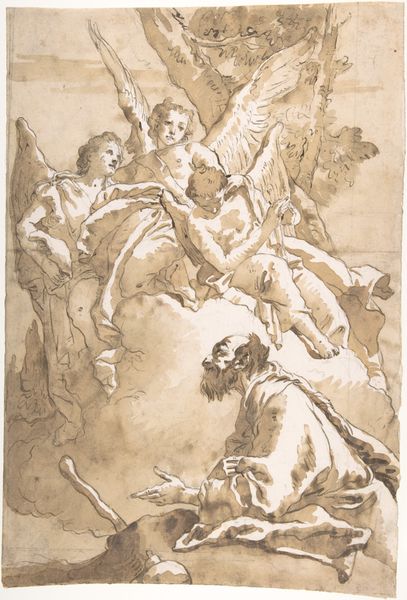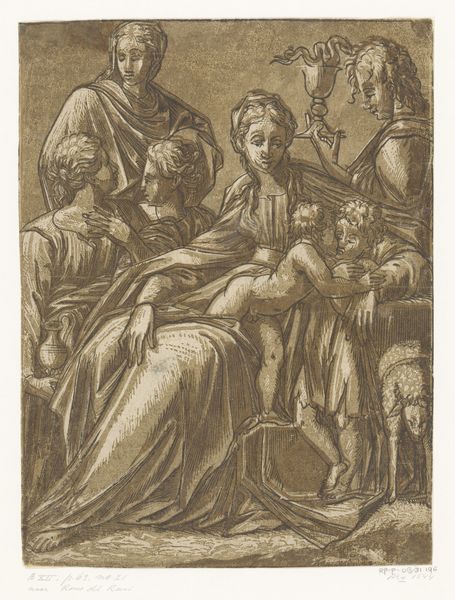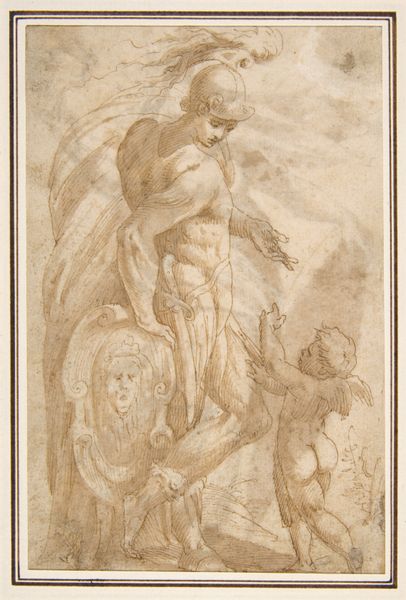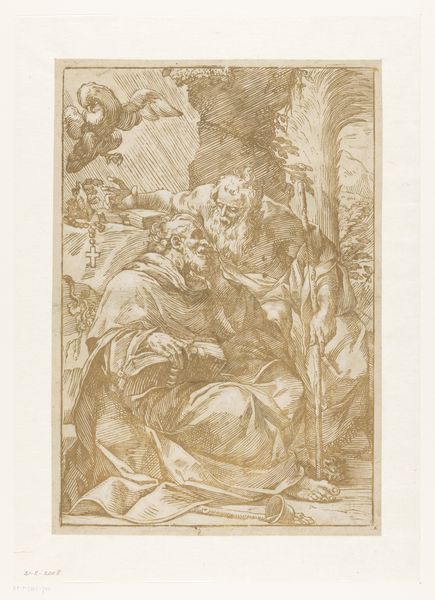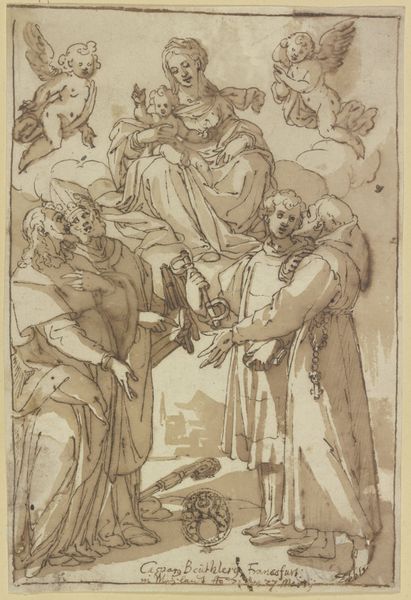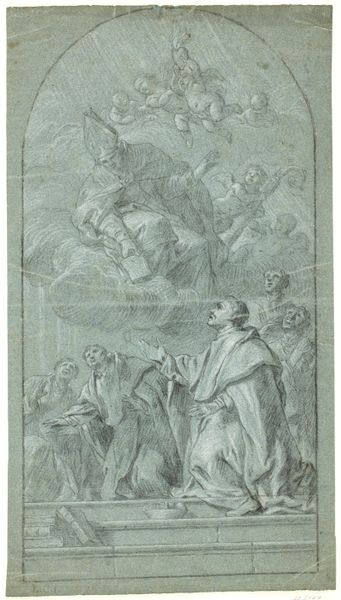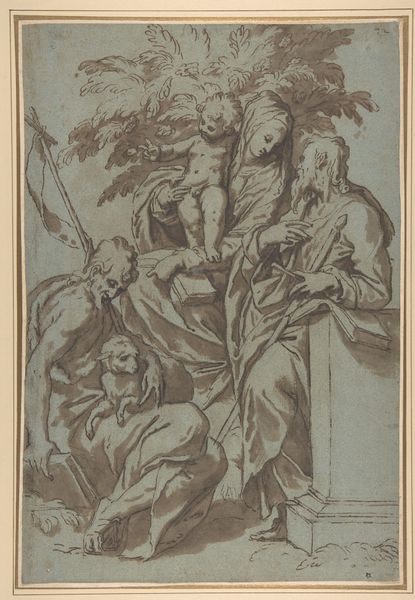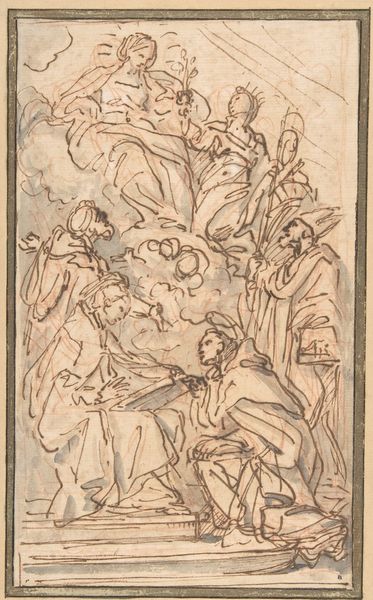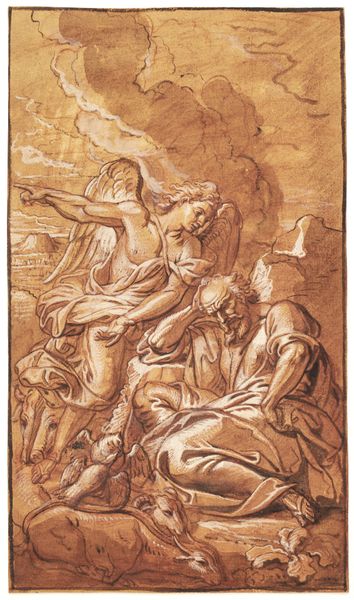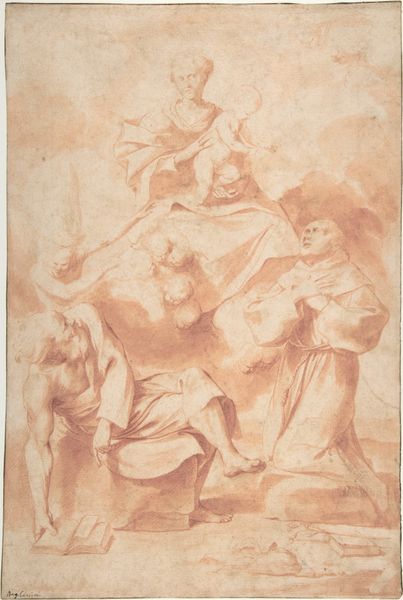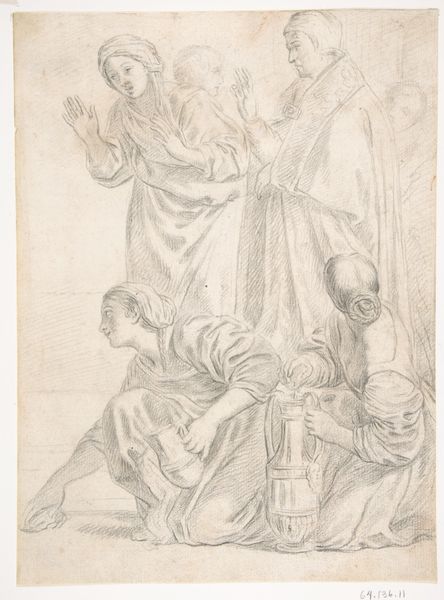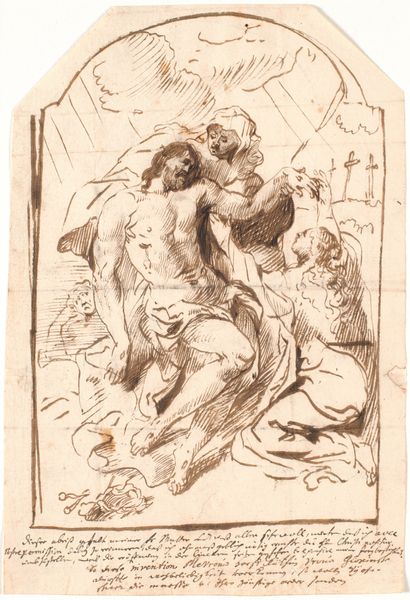
The Madonna and Child with Sts Antony Abbot and James the Greater 1600 - 1700
0:00
0:00
drawing, paper, charcoal
#
drawing
#
baroque
#
charcoal drawing
#
figuration
#
paper
#
charcoal
#
history-painting
Dimensions: 329 mm (height) x 207 mm (width) (bladmaal)
Curator: Ah, I'm immediately struck by the overall reddish-brown monochrome. A sepia-toned spiritualism seems to be rising from the page. Editor: Indeed. What we have here is a drawing, dating from between 1600 and 1700. It's attributed to an anonymous artist and is titled *The Madonna and Child with Sts Antony Abbot and James the Greater*. It's rendered with charcoal on paper and currently resides here at the SMK, Statens Museum for Kunst. Curator: The upward gazes really lock in that Baroque theatricality. Note how the dynamism is enhanced through line, light, and shade contrasts; observe the strategic use of hatching to delineate form and volume. The composition draws the eye up towards the divine vision. Editor: The interesting point for me, though, is how these devotional images functioned within their historical context. Consider the role of drawings like these; they acted not just as artworks in their own right, but as studies for larger paintings. They provided models for workshop practice, and fuelled a popular, broad visual culture centered on faith. What could ordinary believers possibly glean when standing at an altar contemplating them? Curator: An interesting approach. But to disregard the materiality here feels like a glaring oversight! Feel the grain of the paper! Witness the control of the hand! See how those charcoal strokes build a convincing sense of spatial depth and luminosity? That alone imbues the divine. Editor: Perhaps. But aren't those material choices also shaped by the available resources, and the patrons' preferences? What story do these material details tell about religious authority and social values during that particular era? And for that matter, the tools on the ground: do they connect to the history of monasticism and self-sufficiency? Curator: Point taken. I can acknowledge the social implications of these signs. However, this piece serves primarily as an exercise in sophisticated formal organization; there is a compositional equilibrium achieved, and that is paramount to any contextual meaning you may suggest. Editor: It is tempting to read art in different lights, but that's what makes these kinds of exercises interesting. Curator: Quite, what seems at first like simply tonal gradations in drawing has far more complex relations when looked at for a long time.
Comments
No comments
Be the first to comment and join the conversation on the ultimate creative platform.
